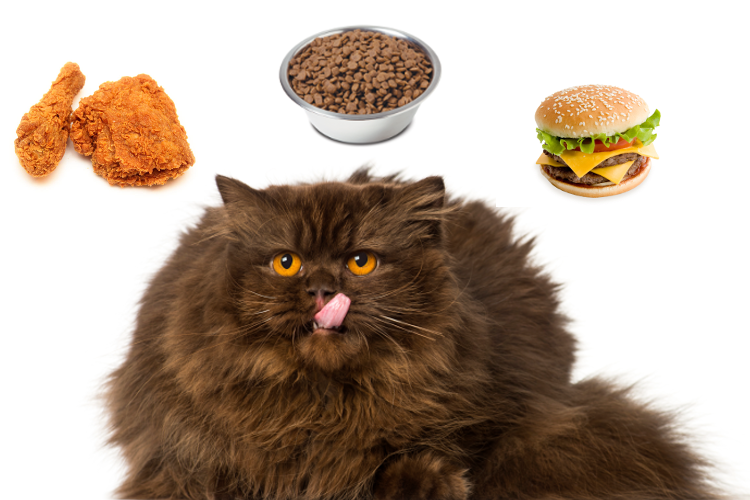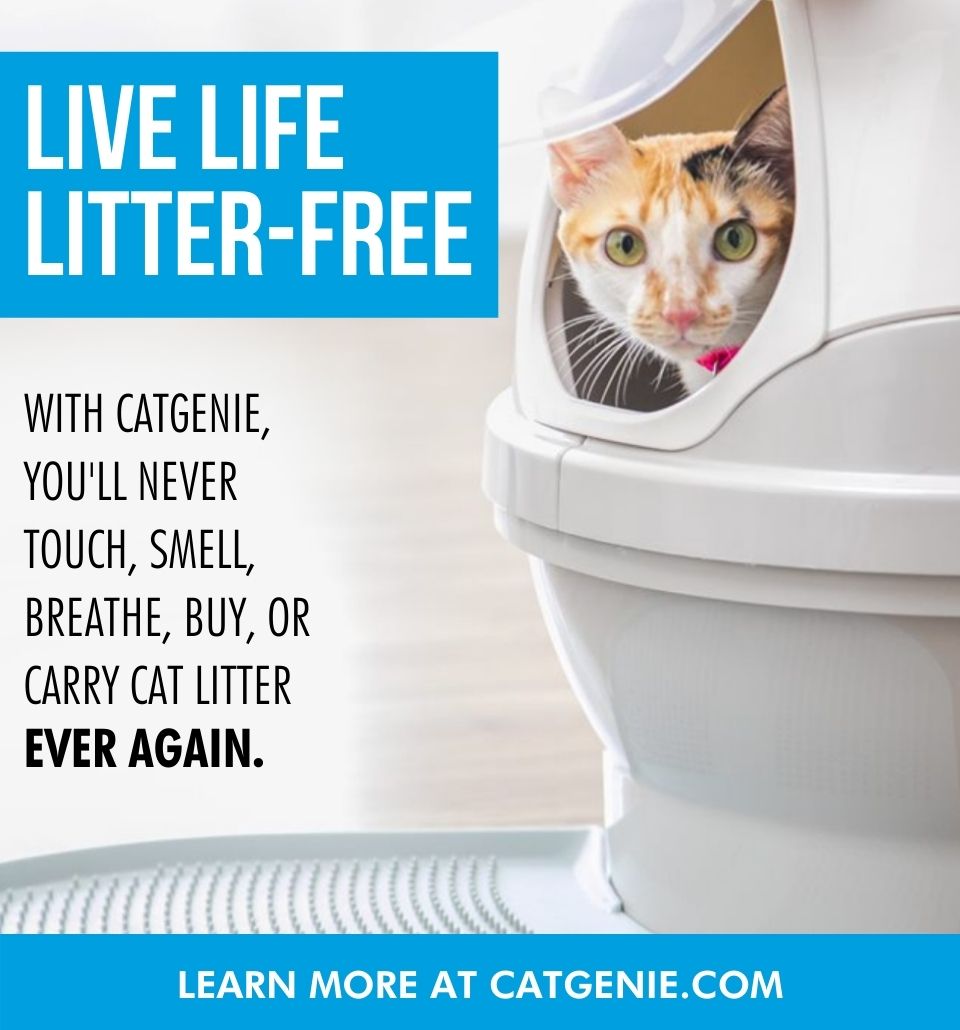I had a cat named Dylan a few years ago, and he was morbidly obese. He was a big, fat, white overweight cat with gray spots and he just loved food. Cat food, dog food, people food. Food from the trash. All of it. At the time I had nine cats (see: crazy cat lady in the dictionary featuring my photo), and it was nearly impossible to moderate his diet at all. He was the kind of fat cat that got clumped fur on his back because he couldn’t groom himself properly.
Then one day he jumped from a dining room chair to the floor in a most un-cat like fashion and he broke his back. Literally broke his spine. Thankfully, he healed, and we worked in earnest to decrease his access to food so he could lose some weight. When he died of natural causes a few years later, he was merely overweight instead of obese thanks to efforts on our part to moderate his food intake.
So Why Are Cats Getting Fat?
60% of cats are overweight or obese, according to the 2014 study done by the Association for Pet Obesity Prevention. Theories vary about why this is the case, but two are the most respected: calorie-packed dry cat food, and cats spending most of their lives indoor and not exercising enough.
Here’s another number for you: most cats only need around 200 calories a day. I just checked the calorie content of my cat’s current food on this handy list and found that each cup of food has 422 calories a day. I’m pretty sure each of our three cats gets about a cup of food a day or so. None of my current cats are overweight (in fact, one is stray-cat-skinny naturally) and one cat is still a kitten so he eats more (kittens need three times as many calories as adult cats until they are a year old)
Is It All About the Food?
According to Veterinarian Lisa A. Pierson, it’s all about that dry kibble. She believes three major factors are at play here.
- Water content is too low.
- Carbohydrate load is too high.
- Cat food contains too much plant-based, rather than meat-based, protein.
She recommends switching to largely wet food diet for cats, since wet food is 80% water and typically contains meat-based protein. This makes sense in many ways, as cats are true carnivores. In addition, cats in their natural habitat of hunting small animals get most of their fluid from animals as well (most small animals are about 70% water).
But if you have a cat struggling with weight, you may want to switch to a high quality wet food diet and feed your cat several times a day. Chances are your cat will love it. You’ll find more great advice here.
Or Is It All About Exercise?
There is no doubt that indoor cats get far less exercise than their wild outdoor counterparts do. Personally I believe wholeheartedly that the reason my current cats aren’t fat all come down to having a nine year old daughter who loves to play with them. Between our “fishing” cat toys and the laser pointer, my cats run like crazy daily. In addition, of course, they have each other and happily tear around the house several times a day chasing each other or the dog.
So go get yourself some cat toys and try to play with them for ten minutes twice a day. There are also many great suggestions in this document from the Association for Pet Obesity Prevention, such as hiding the cat’s food or placing the food far away from your cat’s favorite spots. You can also use toys such as this to make food play, and you can even make your own.
Whatever you can do to help your cat lose weight, do it. Your cat will live longer and be happier as a result!






